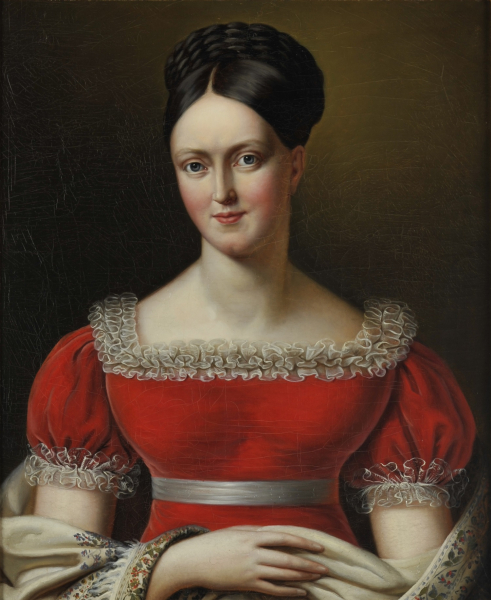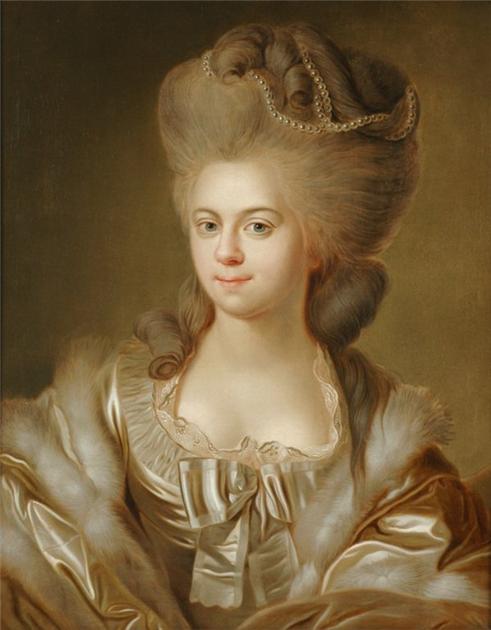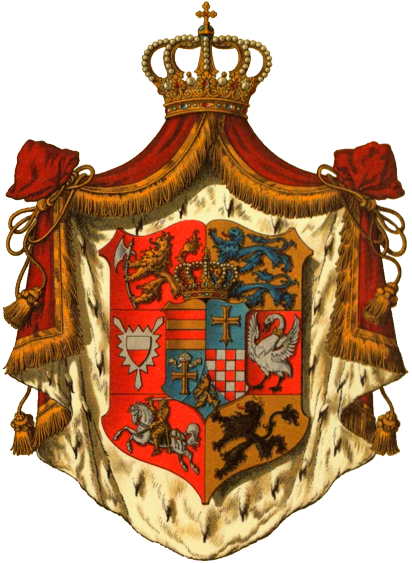by Scott Mehl © Unofficial Royalty 2018
Grand Duchy of Oldenburg: The Counts of Oldenburg died out in 1667, after which Oldenburg became a duchy until 1810, when it was annexed by the First French Empire under Napoleon, Emperor of the French. After the final defeat of Napoleon, the Congress of Vienna elevated the Duchy of Oldenburg to a Grand Duchy in 1815. The Grand Duchy of Oldenburg consisted of three widely separated territories – Oldenburg, Eutin, and Birkenfeld – now in the German states of Lower Saxony, Schleswig-Holstein, and Rhineland-Palatinate. With the fall of the German Empire at the end of World War I, Friedrich August II, the last Grand Duke of Oldenburg was forced to abdicate his throne on November 11, 1918.
********************

Friedrich August II, Grand Duke of Oldenburg; Credit – Wikipedia
Friedrich August II was the last reigning Grand Duke of Oldenburg. He was born in Oldenburg, Grand Duchy of Oldenburg, now in Lower Saxony, Germany, on November 16, 1852, the elder son of Peter II, Grand Duke of Oldenburg and Princess Elisabeth of Saxe-Altenburg. He had one younger brother:
- Duke Georg Ludwig (1855-1939) – unmarried
Along with his brother, Friedrich August was educated under the direction of the famed Bavarian General Otto von Parseval and then studied at the Universities of Bonn, Strasbourg, and Leipzig before embarking on a world tour.

Princess Elisabeth Anna of Prussia; Credit – Wikipedia
Friedrich August married Princess Elisabeth Anna of Prussia, in Berlin, on February 18, 1878. She was the daughter of Prince Friedrich Karl of Prussia and Princess Maria Anna of Anhalt-Dessau. The couple had two daughters:
- Duchess Sophia Charlotte (1879-1964) – married Prince Eitel Friedrich of Prussia, no issue
- Duchess Margaret (1881-1882) – died in infancy

Duchess Elisabeth Alexandrine of Mecklenburg-Schwerin; Credit – Wikipedia
After his first wife died in August 1895, Friedrich August, needing a male heir and a mother for his surviving daughter, remarried. His second wife was Duchess Elisabeth Alexandrine of Mecklenburg-Schwerin, the daughter of Friedrich Franz II, Grand Duke of Mecklenburg-Schwerin and Princess Marie of Schwarzburg-Rudolstadt. They married on October 24, 1896, and had five children:
- Nicolas Friedrich Wilhelm, Hereditary Grand Duke of Oldenburg (1897-1970) – married Princess Helena of Waldeck and Pyrmont, had issue
- Duke Friedrich August (1900) – died just after birth
- Duchess Alexandrine (1900) – died just after birth
- Duchess Ingeborg Alix (1901-1996) – married Prince Stephan of Schaumburg-Lippe, had issue
- Duchess Altburg Marie (1903-2001) – married Josias, Hereditary Prince of Waldeck and Pyrmont, had issue
Friedrich August became Grand Duke of Oldenburg upon his father’s death on June 13, 1900. His reign saw the development of waterways and the expansion of ports along the Weser River to allow for increased trade and economic power for the Grand Duchy. An avid sailor, he received his captain’s license at a young age and was recognized for his skill and efforts after making several water rescues. He was also recognized by the German Kaiser Wilhelm II, who appointed him Admiral of the Imperial Navy – the only German prince to be given this status. Also possessing a brilliant technical mind, Friedrich August made several inventions, including a ship propeller which received numerous foreign patents. He served as honorary chairman of the Shipbuilding Technical Society and was one of the founders of the German Training Ship Association, which promoted expanded training for the German merchant navy.

Friedrich August II (left) with the Duke and Duchess of Brunswick, 1915. photo: Wikipedia
With the fall of the German Empire at the end of World War I, Friedrich August was forced to abdicate his throne on November 11, 1918. He retired to Schloss Rastede where he took up farming. Claiming an “extremely precarious” financial situation, Friedrich August petitioned the Oldenburg government for an annual allowance the year after his abdication.

Rastede Palace. photo: By N9713 – Own work, CC BY-SA 4.0, https://commons.wikimedia.org/w/index.php?curid=63250514
Friedrich August II, the last Grand Duke of Oldenburg, died at Schloss Rastede in Oldenburg, Lower Saxony, Germany, on February 24, 1931. He is buried in the Ducal Mausoleum in St. Gertrude’s Cemetery in Oldenburg.
This article is the intellectual property of Unofficial Royalty and is NOT TO BE COPIED, EDITED, OR POSTED IN ANY FORM ON ANOTHER WEBSITE under any circumstances. It is permissible to use a link that directs to Unofficial Royalty.
Oldenburg Resources at Unofficial Royalty





















